Introduction to Plants -> grassland
Grassland
A grassland is a large open area of grass, with few trees and shrubs. It is also known as a prairie, savanna, or steppe, depending on the region. Grasslands can be found on every continent except Antarctica and are characterized by their distinct grassy vegetation and diverse wildlife.
Types of Grasslands
There are two main types of grasslands:
- Temperate Grasslands: Found in regions with cold winters and hot summers, such as the Great Plains of North America and the Eurasian Steppe.
- Tropical Grasslands: Found in regions with warm temperatures year-round, such as the African savannas and the Australian outback.
Characteristics of Grasslands
Grasslands have several distinct characteristics:
- Grassy vegetation with few trees
- Fertile soil, ideal for agriculture
- Seasonal wildfires that help maintain the grassland ecosystem
- Diverse wildlife including grazing mammals, birds, and insects
Importance of Grasslands
Grasslands play a crucial role in the ecosystem and provide several benefits:
- Supporting diverse wildlife and plant species
- Providing grazing land for livestock
- Helping to mitigate climate change through carbon sequestration in the soil
- Offering recreational opportunities for outdoor activities
Study Guide
Here are some key points to remember about grasslands:
- Location:
- Grasslands can be found on every continent except Antarctica.
- Types:
- Temperate grasslands have cold winters and hot summers, while tropical grasslands have warm temperatures year-round.
- Characteristics:
- Grasslands have grassy vegetation, fertile soil, and support diverse wildlife.
- Importance:
- Grasslands are important for supporting wildlife, providing grazing land, and helping to mitigate climate change.
Understanding the characteristics and importance of grasslands is essential for appreciating the role they play in the environment and human society.
.◂Science Worksheets and Study Guides Seventh Grade. Introduction to Plants
Study Guide Introduction to Plants
Introduction to Plants  Worksheet/Answer key
Worksheet/Answer key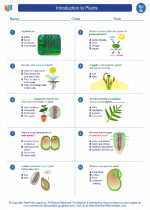 Introduction to Plants
Introduction to Plants  Worksheet/Answer key
Worksheet/Answer key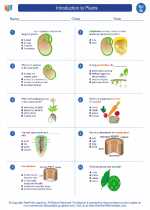 Introduction to Plants
Introduction to Plants  Worksheet/Answer key
Worksheet/Answer key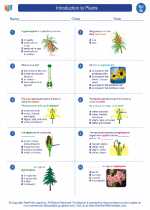 Introduction to Plants
Introduction to Plants  Worksheet/Answer key
Worksheet/Answer key Introduction to Plants
Introduction to Plants  Vocabulary/Answer key
Vocabulary/Answer key Introduction to Plants
Introduction to Plants  Vocabulary/Answer key
Vocabulary/Answer key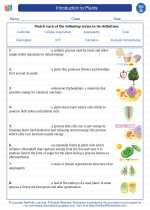 Introduction to Plants
Introduction to Plants  Vocabulary/Answer key
Vocabulary/Answer key Introduction to Plants
Introduction to Plants  Vocabulary/Answer key
Vocabulary/Answer key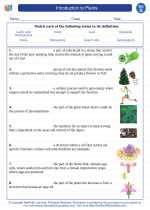 Introduction to Plants
Introduction to Plants  Vocabulary/Answer key
Vocabulary/Answer key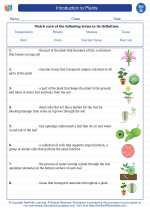 Introduction to Plants
Introduction to Plants 

 Worksheet/Answer key
Worksheet/Answer key
 Worksheet/Answer key
Worksheet/Answer key
 Worksheet/Answer key
Worksheet/Answer key
 Worksheet/Answer key
Worksheet/Answer key
 Vocabulary/Answer key
Vocabulary/Answer key
 Vocabulary/Answer key
Vocabulary/Answer key
 Vocabulary/Answer key
Vocabulary/Answer key
 Vocabulary/Answer key
Vocabulary/Answer key
 Vocabulary/Answer key
Vocabulary/Answer key

The resources above cover the following skills:
LIFE SCIENCE
Ecosystems: Interactions, Energy, and Dynamics
Use evidence and scientific reasoning to explain how characteristic animal behaviors (e.g., building nests to protect young from cold, herding to protect young from predators, attracting mates for breeding by producing special sounds and displaying colorful plumage, transferring pollen or seeds to create conditions for seed germination and growth) and specialized plant structures (e.g., flower brightness, nectar, and odor attracting birds that transfer pollen; hard outer shells on seeds providing protection prior to germination) affect the probability of successful reproduction of both animals and plants.